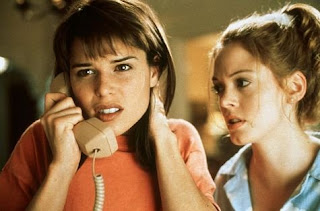Why Breaking Bad is Better than Most Movies - Part 3
--DISCLAIMER--
Please Be Advised: While I will do my best not to reveal any spoilers within this series of posts, I cannot 100% guarantee that it will not happen.
--READ AT YOUR OWN RISK--
"As to your dead guy, occupational hazard. Drug dealer getting shot? I'm gonna go out on a limb here and say it's been known to happen." - Saul Goodman
The next two elements below that make Breaking Bad better than most movies really go hand in hand. Anyone who understands the entire process of filmmaking knows that the Director's best friend is the Cinematographer. (I've gone into more detail about the importance of cinematography here.) The images that Breaking Bad has been able to produce has raised the bar in what a television show can look like and really makes the big blockbusters churned out by Tinseltown pale in comparison.
3. The Direction
The basic definition of a film or television director's job is to bring to life what is on the written page and put it up on screen for everyone to see. It's an extremely collaborative effort, and the images that he or she has in his or her mind after reading the script requires input and a shared effort from the actors and the DP, all the way down to production design and even wardrobe. (Trust me, there's a thought process to what color each character wears, when they wear it, and why. Some people have even gone to great measures to create an info-graphic to colorize Walter White's decay.) However, the most important thing a director does is where they place the camera. The placement of the camera is just as important as an actor's performance.
Breaking Bad brought together a team of veteran television and film directors whose list of past accomplishments include work on such tv shows as The X-Files, Game of Thrones, The Walking Dead, Mad Men, The Sopranos, Scrubs, 30 Rock, Oz, The Office, and Modern Family. They also brought in innovative film director and fan favorite Rian Johnson, whose resume includes Looper and Brick.
The images that they've been able to produce have been consistent throughout the show's entire 62 episode run. The tone, the look and feel of the show has hardly altered. Michael Slovis, Breaking Bad's veteran DP for most of the series, referred to it as "distinctly cinematic: as is the case in feature films, wide shots are typically favored over close-ups, hot spots and shadows usually appear on or around the actors and a stunning vista of the New Mexico desert is usually just a scene or two away." Taking into consideration that their entire cast and crew could keep up such high quality of craftsmanship over six years -- while on location in the desert -- is truly remarkable.
What I love most about Breaking Bad is the incredible amount of restraint that the directors (together with the rest of the crew) show when piecing together each episode. Everyone loves the flashy POV shot or the crazy shovel cam, but what makes a good director and show runner is putting those shots in when they count. Too much would be overkill, but sprinkled just right throughout each episode is pure perfection.
"Just because you shot Jesse James, don’t make you Jesse James." – Mike Ehrmantraut
4. The Cinematography
The images below practically speak for themselves. However, a little insight is necessary and I'll provide it below.
Michael Slovis is a visionary genius. He treats the desert surrounding Albuquerque, New Mexico as a character in and of itself. The show perfectly captures the rich and warm hues of the American Southwest.
Breaking Bad is (now was) one of the last television shows to still shoot on 35mm film. This is not a cheap medium. The crew was only allowed to shoot 11,000 feet of film a day (that's just over 2 hours of footage), so every shot was planned out in detail. According to Slovis in a recent Forbes article, the show was "shot with loving concern for every single frame."
Slovis joined Breaking Bad in an attempt to change the entire landscape of television, shooting it in a very cinematic way. Something that had not really been done before. I believe he accomplished that and most likely raised the standard of television and film that will be very difficult to match for years to come.
Stay Tuned for Part 4 Coming Soon!









Comments
Post a Comment